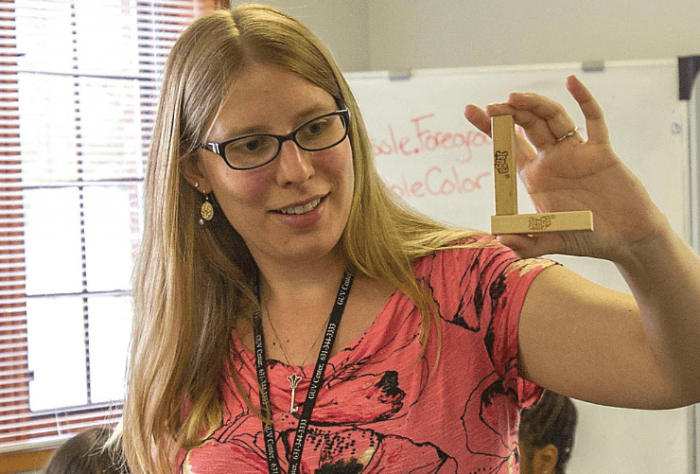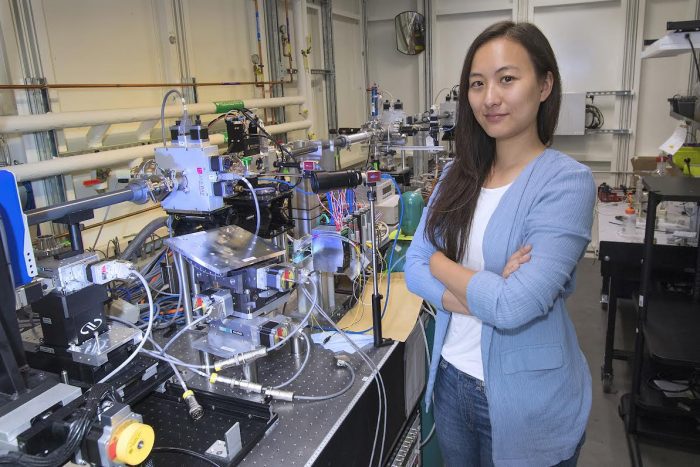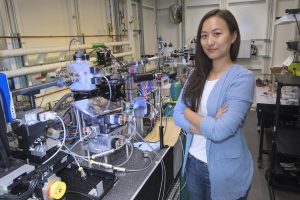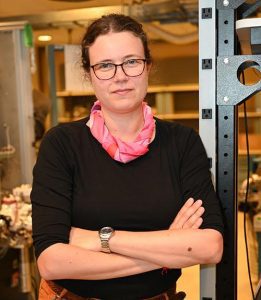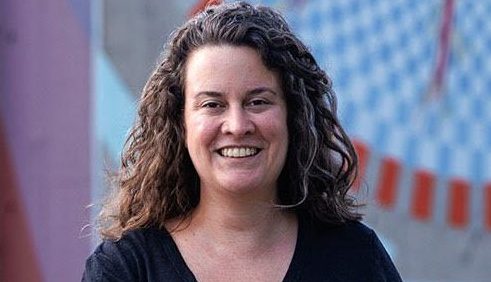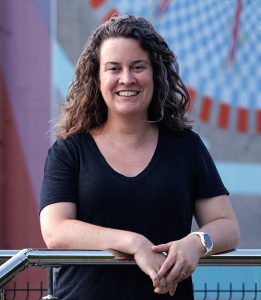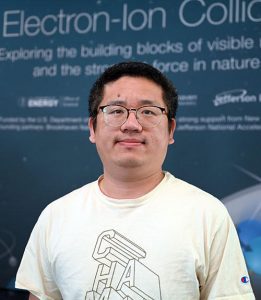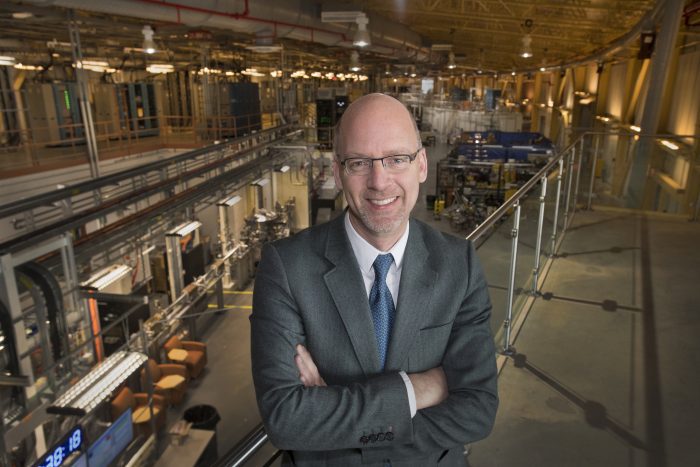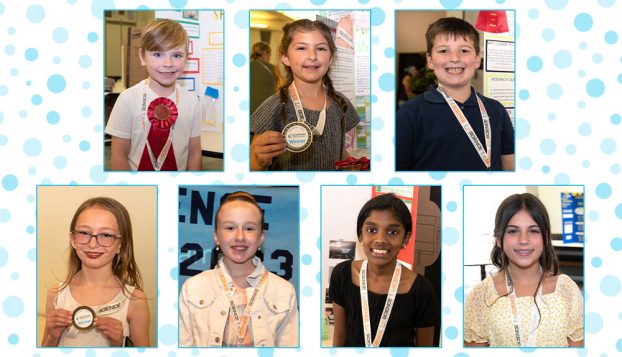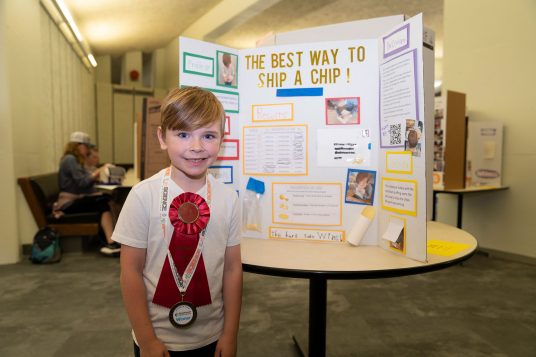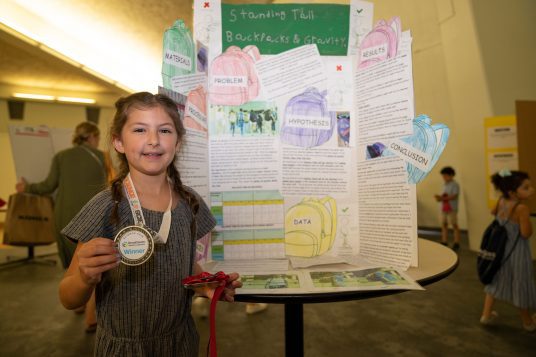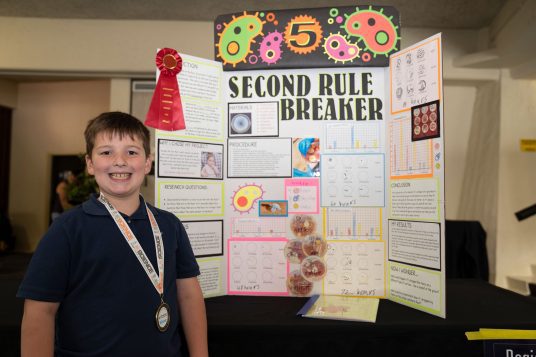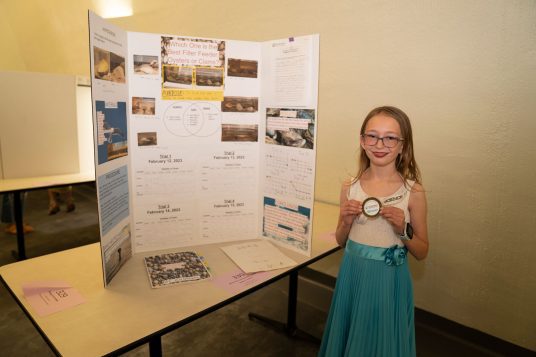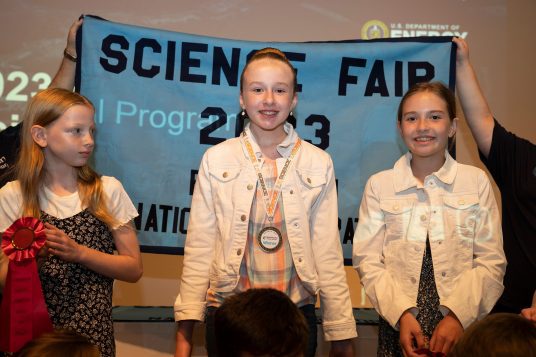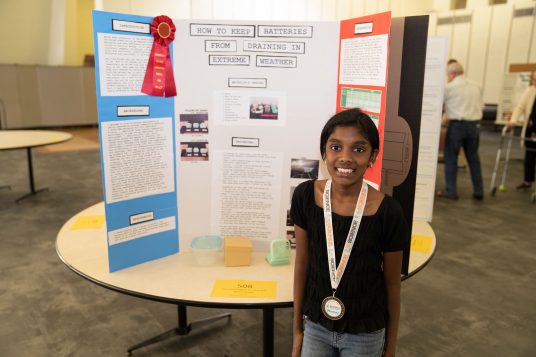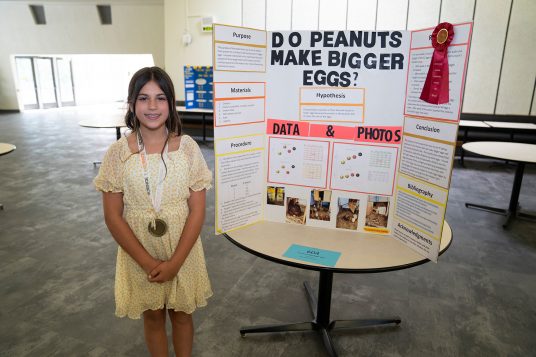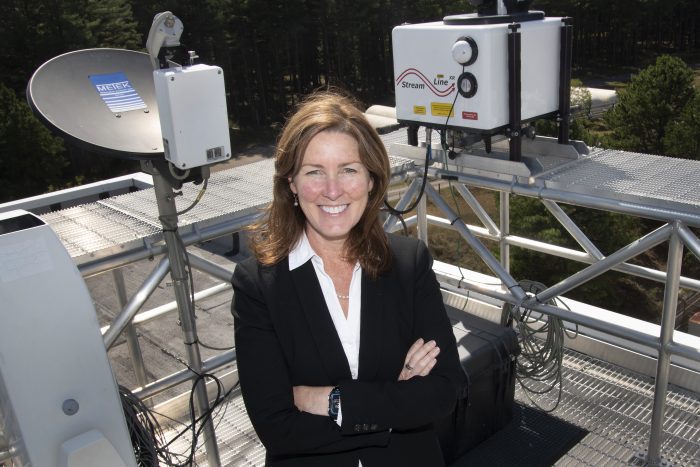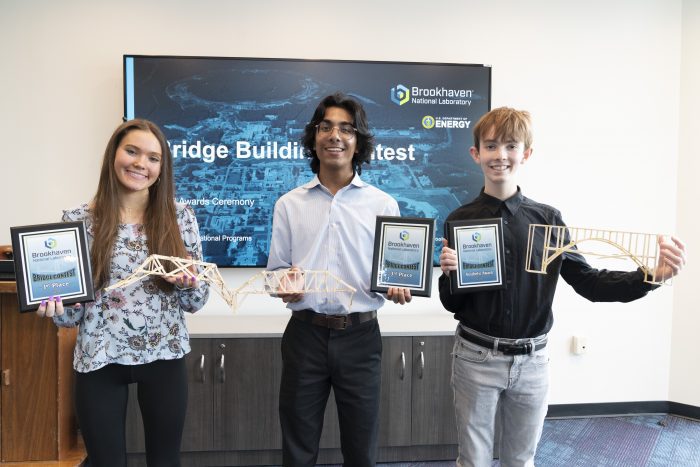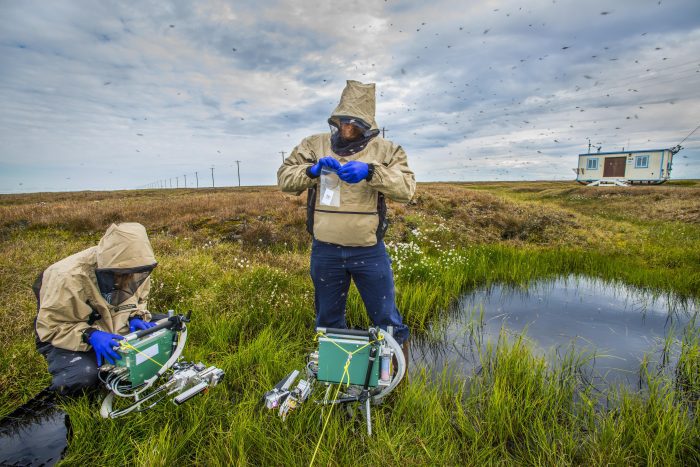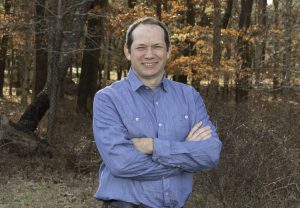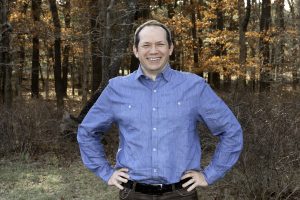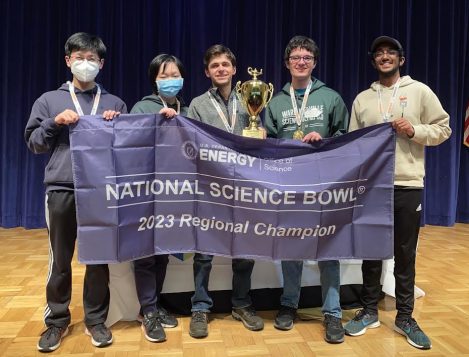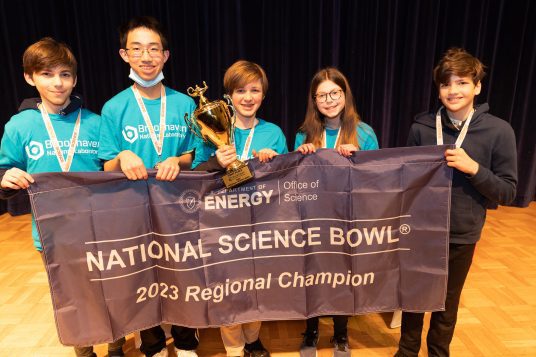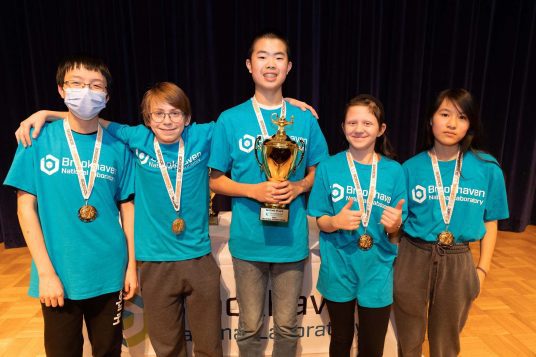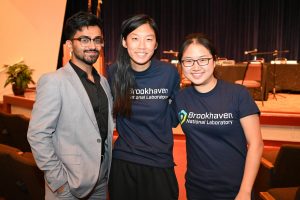By Daniel Dunaief
Brookhaven National Laboratory hopes to inspire the scientists of the future.
The Department of Energy sponsored national laboratory, which attracts scientists from all over the world to its state-of-the-art facility, opens its doors regularly to local students and teachers, with researchers and educators translating what they do to area residents at all levels of scientific development and understanding.
Amid so many other efforts and with a welcome return to on-site education after pandemic restrictions over the last few years, BNL received DOE funding to help eight area teachers learn how to create computer coding.
In their classrooms, these educators have shared what they studied this past summer with their students.
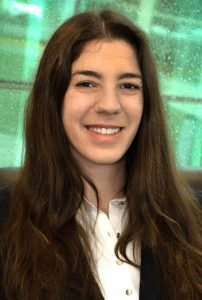
Coding, which uses programs like Python and Arduino, can help scientists create a set of instructions that allow computers to process and sort through data more rapidly than any person could by hand.
At the same time, a knowledge of coding can and does provide students with tools that scientists seek when they are choosing graduate students, technicians or staff in their laboratories.
Coding helps to set students “up for a job,” said Michele Darienzo, Educational Programs Administrator and one of the two teachers for the four-week summer program. “It puts you at the top of the pile.”
Darienzo added that efforts such as these prepare the science, technology, engineering and math workforce for the future.
Using modern technology, researchers collect data in a wide range of fields at a rate that requires technological help to sort through it and derive meaning from it.
“We’re at the point where lots of projects are collecting so much data and information,” said Darienzo. “We have one experiment [that is producing] many iPhones per second worth of data. That’s not something a person can do in their lifetime.”
Darienzo taught the programming language Python to the class of teachers, while Amanda Horn, who is also an Educational Programs Administrator, instructed these educators with Arduino.
“It went really well,” said Horn. “The teachers seemed really engaged in everything we were doing.”
A day in the life of a river
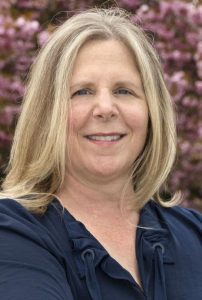
Beyond the on site experience at BNL, Horn accompanied a class this fall or a Day in the Life of the Carmans River at Smith Point County Marina.
The students used sensors to measure numerous variables, such as temperature, pressure and humidity. With another sensor, they were able to measure carbon dioxide levels.
“If you cup your hand around the sensor, you can graph [the level of the gas] in real time using the code,” said Horn. Variabilities occurred because of the movement of air, among other factors, she added.
The students on the trip “seemed excited [to use the sensors] and to get a sense of how they worked,” Horn said.
In the context of global warming in which greenhouse gases such as carbon dioxide drive an increase in temperature, Horn addressed why it’s important to measure the levels of the gas.
Ongoing efforts
Training teachers to code represents one of numerous educational efforts BNL offers.
The Office of Educational Programs has hosted over 30,000 participants in various programs in its K-12 and university science education programs.
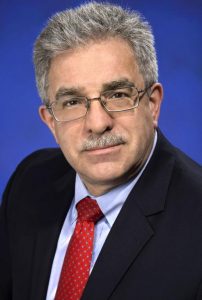
Bringing students back on site this year after suspending in person visits amid the pandemic created a “big difference” for students, in terms of their excitement and enthusiasm, said Kenneth White, Manager of the Office of Educational Programs.
Jeffrey Tejada, a junior at Brown University, conducted summer research in the Computational Sciences Initiative.
Tejada, who grew up in Patchogue and moved to Medford, appreciated the opportunities he’s had since he started coming to BNL at the age of 14.
“It’s crazy how incredible BNL Is as a resource,” said Tejada, whose parents are immigrants from the Dominican Republic.
Indeed, the first year Tejada attended, Aleida Perez, Manager, University Relations and DOE Programs at BNL, needed to convince his mother Rosa Tejada that the effort, which didn’t involve any pay, would benefit her son.
“My mom asked [Perez,], ‘how worth it is this?’” Tejada recalled. Perez told Rosa Tejada, “You have to do this.”
His mom didn’t understand, but she listened and “that’s all that mattered,” as Tejada not only conducted research over the years, but is also planning to earn his PhD after he graduates.
White suggested that the recent coding effort was a recognition that students coming for internships at BNL or for scientific training opportunities elsewhere ended up spending considerable time trying to “figure out the basics” of coding.
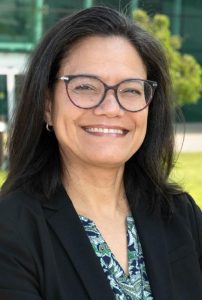
In the first year of the teaching program, BNL reached out to teachers in 20 school districts that met particular criteria, including serving a high percentage of students that are traditionally under-represented in STEM fields. This included Longwood, Hampton Bays, Williams Floyd, South Huntington, Roosevelt, Central Islip, Middle Country and Brentwood.
The first week of the program was “frightening” for some of the teachers, who hadn’t had coding experience, said Perez. The teachers were “glad they came back for week two.”
As a part of the program, teachers presented their coding lessons to high school students on site at BNL, said Bernadette Uzzi, Manager, K-12 Programs in the Office of Educational Programs.
The final assessment test was a “pretty fun day,” Uzzi said, as the students pushed teachers to go further with their outdoor explorations.
Uzzi was thrilled when she had read that the Department of Energy had invited BNL to write a proposal for this pilot program. “Coding skills are important to be a scientist, no matter what field you’re in” she said. “There’s definitely a gap in what students are learning in school versus what is needed in the STEM workforce.”
Summer of ’24
At this point, it’s unclear if the DOE will build on this pilot program and offer additional teachers the opportunity to learn coding and bring this skill back to their classroom.
Uzzi said she would like to increase the number of teacher participants to 12 next year and to add physics applications to the current course work, which included a focus on environmental climate science.

